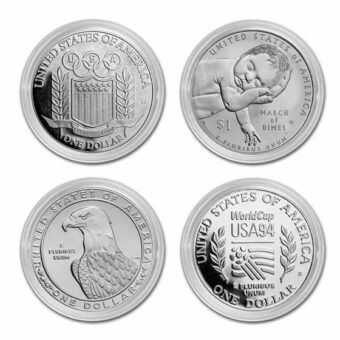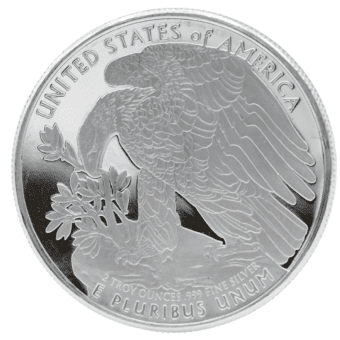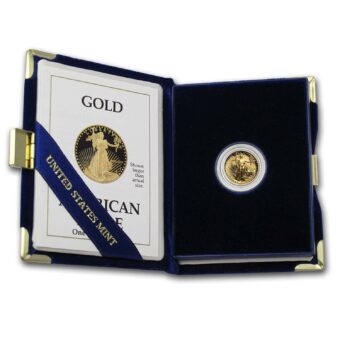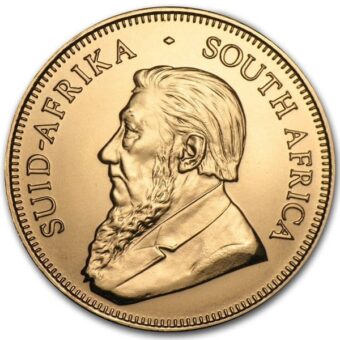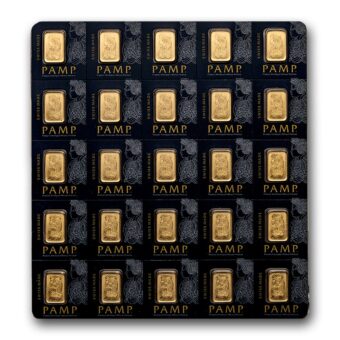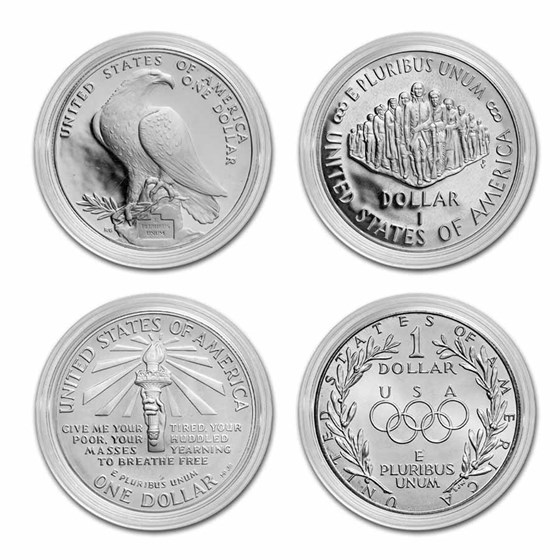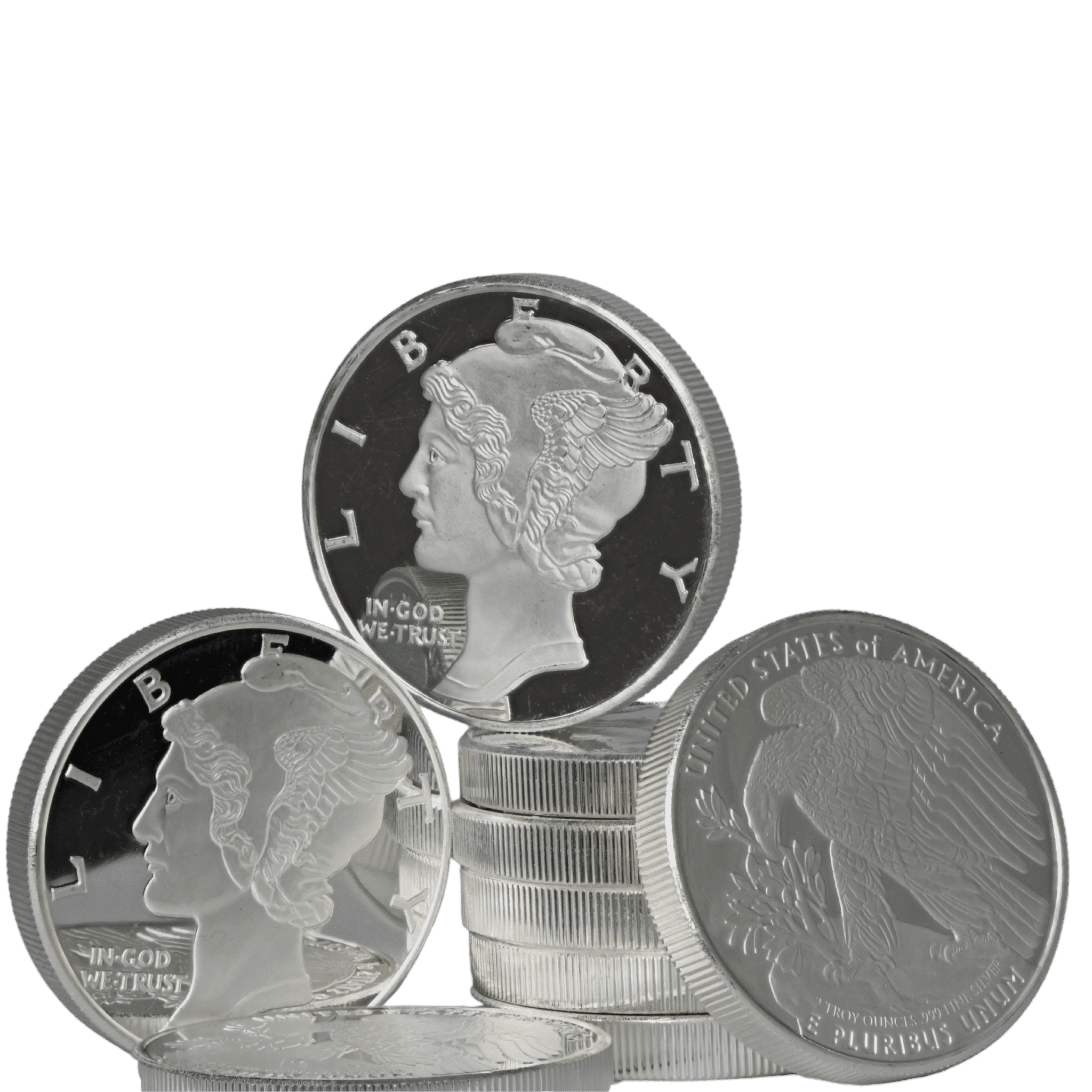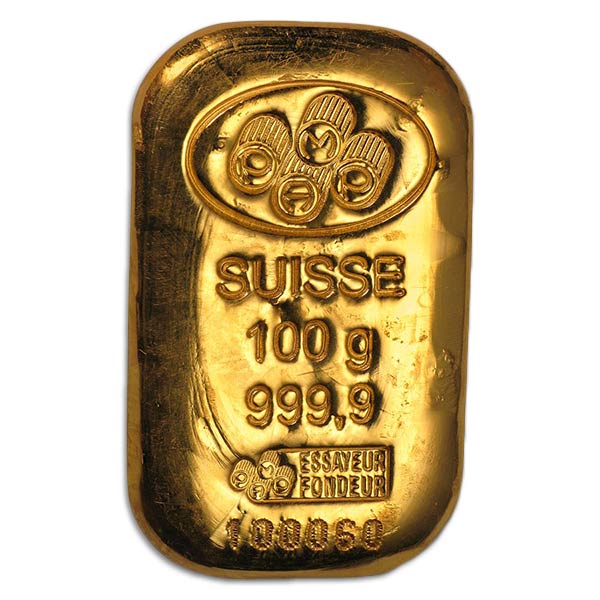Market Recap: A Week of Steady Gains for Precious Metals
Monday, Feb. 4: Gold Holds Steady Amid Trade Uncertainty
Gold prices saw a slight dip of 0.19%, settling at $2,813.47 per ounce, while silver declined 0.76% to $31.62 per ounce. A strengthening U.S. dollar was a contributing factor to the metals’ slight pullback. However, the market remains focused on broader economic trends, particularly the ongoing trade negotiations between the U.S. and China. Any shifts in tariffs or trade policy could have significant implications for global demand, particularly for commodities like gold and silver.
Tuesday, Feb. 5: Gold Reaches a New Record High
Gold climbed 0.5% to a new all-time high of $2,858.12 per ounce, reflecting increased demand for safe-haven assets. Silver followed suit, rising 0.62% to $32.26 per ounce. Market sentiment continues to be shaped by concerns over global trade policy, with market participants awaiting further economic data releases to determine the direction of inflation and interest rates.
Wednesday, Feb. 6: Gold Prices Stabilize Near Record Levels
Following Tuesday’s rally, gold prices remained near their peak, rising slightly by 0.1% to $2,868.94 per ounce. The metal continues to benefit from central bank purchases and persistent geopolitical uncertainties. Silver experienced a small decline of 0.15% to $32.21 per ounce, but remains within a strong trading range. Traders are closely monitoring the U.S. jobs report for any signs of economic softening, which could further support precious metals.
Thursday, Feb. 7: Gold’s Winning Streak Continues
Gold advanced another 0.4%, reaching $2,867.69 per ounce. This marks its sixth consecutive weekly gain, highlighting the sustained strength of the market. Silver edged up 0.2% to $32.26 per ounce. With the upcoming U.S. payrolls report expected to provide further insights into labor market trends, market participants are positioning themselves accordingly. If signs of economic slowdown emerge, demand for gold and silver may increase further.
Friday, Feb. 8: Gold and Silver Prices Remain Resilient
Gold held firm near its record high, gaining $14.20 to close at $2,890.90 per ounce. Silver maintained its strength, rising to $32.73 per ounce. Although the U.S. dollar exhibited some strength throughout the week, demand for physical assets has remained robust, supporting prices for both gold and silver.
Gold’s Price Swings and the Latest U.S. Jobs Report
Gold prices have fluctuated in response to new labor market data released this week. Markets are closely analyzing the impact of job growth, unemployment rates, and wage trends on Federal Reserve policy.
Key Takeaways from the Jobs Report:
- January job growth slowed, with only 143,000 jobs added, falling short of the forecasted 169,000.
- The unemployment rate dipped slightly to 4.0%, reflecting a mix of labor market adjustments and workforce participation shifts.
- Wage growth accelerated by 0.5%, reaching an average hourly earnings rate of $35.87, marking a 4.1% year-over-year increase.
Market Reaction:
Gold initially spiked to session highs following the release of the jobs data, as market participants saw indications that the Federal Reserve might reassess its interest rate policy. However, some profit-taking followed, leading to gold settling at $2,630.80 per ounce, up 0.29% on the day.
Looking Ahead:
With the labor market showing a mix of strength and emerging vulnerabilities, markets are paying close attention to how these developments may influence the Federal Reserve’s decisions in the coming months. If economic conditions soften, expectations for interest rate adjustments could strengthen, providing additional momentum for gold and silver.
Citi and UBS Raise Gold Forecasts—What It Means for Market Participants
Two major financial institutions—Citi and UBS—have adjusted their gold price targets to $3,000 per ounce, reflecting strong expectations for continued upside.
What’s Driving the Higher Forecasts?
- Geopolitical and Trade Uncertainty: Rising trade tensions and shifting global alliances have heightened the appeal of gold as a stable reserve asset.
- Central Bank Gold Accumulation: Many governments, particularly in emerging markets, are increasing their gold holdings to reduce reliance on the U.S. dollar.
- Safe-Haven Demand: With market volatility remaining a factor, gold continues to attract people looking for portfolio protection.
Both Citi and UBS expect gold to reach $3,000 within three months, with a projected 2025 average of $2,900. If inflation persists or economic conditions deteriorate, this forecast may even prove conservative.
JPMorgan’s $4 Billion Gold Delivery: A Market Shift?
JPMorgan Chase is delivering 1.485 million ounces of gold, worth over $4 billion, in one of the largest Comex transactions in history. This move underscores shifting dynamics in the physical gold market, where increased demand and geopolitical factors are creating arbitrage opportunities between different regional exchanges.
Why This Matters:
- Tariff concerns are affecting the global metals trade.
- The price gap between New York and London is widening, incentivizing physical gold transfers.
- Physical gold inventories have surged, suggesting that institutional participants are increasing their exposure.
While the full implications of these deliveries remain uncertain, the shift highlights the growing role of physical gold in financial markets.
Next Week’s Key Economic Events
Several upcoming economic reports and Federal Reserve statements may have a direct impact on gold and silver markets:
Tuesday, Feb. 11:
- Fed Chairman Jerome Powell’s Testimony – Markets will look for signals on interest rate policy.
Wednesday, Feb. 12:
- Consumer Price Index (CPI) Report – A higher-than-expected inflation reading could reinforce gold’s role as an inflation hedge.
Thursday, Feb. 13:
- Producer Price Index (PPI) Report & Jobless Claims – These will provide additional insights into inflationary trends and labor market conditions.
Friday, Feb. 14:
- Retail Sales and Industrial Production Reports – Strong retail sales may bolster the dollar, while weaker data could further support gold prices.
Conclusion: Gold and Silver Remain Key Assets in 2025
As economic and geopolitical uncertainties persist, gold and silver continue to offer a stable and tangible store of value. Institutional participants and central banks are increasing their allocations, and market conditions suggest continued upward momentum.
For those looking to strengthen their portfolios, physical gold and silver remain compelling options. Brighton Enterprises is here to provide secure and reliable access to investment-grade precious metals.
For more information on how to get started, call us today at 844-459-0042 or visit brightongold.com.
We are not financial advisors. This content is for informational purposes only and should not be construed as financial advice. Please consult with a licensed professional for personalized guidance.






